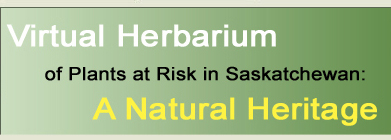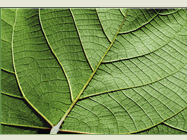|
| Viola blanda
var. palustriformis Gray |
|
| |
| TAXONOMY |
| |
| Family: |
Violaceae |
| Genus: |
Viola |
| |
| Species Synonyms: |
Viola incognita Brainerd
Viola
incognita var. forbesii Brainerd |
| Common Names: |
sweet white violet
large-leaved white violet |
| |
| DISTRIBUTION |
| |
| Canada: |
east-central Saskatchewan, western and southern
Ontario – Quebec – southern Labrador – Newfoundland –
Nova Scotia |
| Saskatchewan: |
Porcupine Hills – Duck Mountain –
northeastern Pasquia Hills |
| Ecoregion: |
Mid-Boreal Upland, Mid-Boreal Lowland |
| |
| HABITAT |
| |
| Saskatchewan: |
moist wooded slopes |
| Associated species: |
mountain bladderfern, Selkirk’s
violet, western oakfern, white spruce |
| |
| RARITY STATUS |
| |
Provincial
Status According
to Harms (2003): |
Endangered |
| Nature Conservancy
Status: |
G4G5 S2 |
Saskatchewan
Species at
Risk Status: |
None |
| COSEWIC Status:
|
None |
| |
| Sweet white violet
is endangered because of rarity in Saskatchewan. This species is located
only in the eastern part of the province. It is usually locally numerous
within in limited areas. |
| |
| SPECIES
DESCRIPTION |
| |
| Rhizomes: |
slender, creeping |
| Stems: |
leafy stem absent; woody base present; runners
present |
| Leaves: |
basal, long-stalked, oval, base heart-shaped or
nearly so, dark green, with a few scattered hairs when young, margin entire
to toothed; stalks reddish |
| Inflorescence: |
flowers solitary; self-fertilizing flowers in
creeping stalks; stalks basal, reddish |
| Flowers: |
perfect, irregular, to 1.5 cm long, slightly fragrant;
sepals 5; petals 5, lateral petals beardless, upper petals narrow, white
with brownish-purple veins |
| Fruits: |
capsule 3-valved; seeds numerous, yellowish-brown |
| |
| VIOLA
KEY FOR SPECIES FOUND IN SASKATCHEWAN |
| |
| 1 Plants without leafy stems; leaves
and flower stalks arising from a woody base and/or plants with runners |
2 |
| 1 Plants with leafy stems; flowers
axillary, runners and woody bases absent |
11 |
| |
|
| 2 Leaves deeply divided; plants of
prairies and dry areas |
V. pedatifida |
| 2 Leaves toothed or lobed but not
deeply divided or margin entire; plants of meadows to moist woods or boggy
areas |
3 |
| |
|
| 3 Flowers white, may have purplish
lines towards the base |
4 |
| 3 Flowers blue to violet |
7 |
| |
|
| 4 Plants without runners; leaves circular
to kidney-shaped |
V. renifolia |
| 4 Plants with runners; leaves oval
to kidney-shaped |
5 |
| |
|
| 5 Leaves hairy, at least when young;
leaf and flower stalks reddish |
V. blanda var. palustriformis |
| 5 Leaves hairless; leaf and flower
stalks greenish |
6 |
| |
|
| 6 Leaves 2 – 5 cm long, 2.5
– 3.5 cm wide |
V. palustris var. brevipes |
| 6 Leaves 1 – 2 cm long, 1 –
1.5 cm wide |
V. macloskeyi ssp. pallens |
| |
|
| 7 Rhizomes thick and fleshy; runners
absent; woody base usually short and thick; lateral petals bearded or not;
sepals with or without marginal hairs |
8 |
| 7 Rhizome slender and cord-like; runners
present or absent; woody base present or absent; lateral petals always bearded
(except V. selkirkii); sepals without marginal hairs |
10 |
| |
|
| 8 Spurred petal beardless |
V. sororia |
| 8 Spurred petal bearded |
9 |
| |
|
| 9 Sepals with marginal hairs |
V. septentrionalis |
| 9 Sepals without marginal hairs |
V. nephrophylla |
| |
|
| 10 Runners present; petal spur much
shorter than the blade; lateral petals bearded; plants of moist meadows
and streams |
V. palustris var. palustris |
| 10 Runners absent; petal spur to 2/3
as long as blade; lateral petals beardless; plants of woods and rocky slopes |
V. selkirkii |
| |
|
| 11 Leaves lance-shaped to narrowly
oval; flowers yellow, may have purple veins at the base |
12 |
| 11 Leaves heart-shaped to kidney-shaped;
flowers yellow, white or blue |
13 |
| |
|
| 12 Leaves usually at least three times
as long as wide, lance-shaped to elliptic |
V. nuttallii |
| 12 Leaves less than three times as
long as wide, narrowly oval |
V. vallicola var. vallicola |
| |
|
| 13 Flowers yellow, with purplish-brown
veins; plants of rich deciduous woods |
V. pubescens var. scabriuscula |
| 13 Flowers white to lilac or blue;
plants of woods or meadows |
14 |
| |
|
| 14 Flowers white inside, yellow at
base and with purplish veins or purple tinge on outside; stipules entire |
V. canadensis var. rugulosa |
| 14 Flowers blue to lilac; stipules
toothed |
15 |
| |
|
| 15 Leaves thin, hairless; stipules
oval; flowers lilac |
V. conspersa |
| 15 Leaves thick, glabrous to densely
pubescent; stipules linear; flowers deep blue |
16 |
| |
|
| 16 Leaves densely hairy |
V. adunca var. adunca |
| 16 Leaves hairless |
V. labradorica |
|






